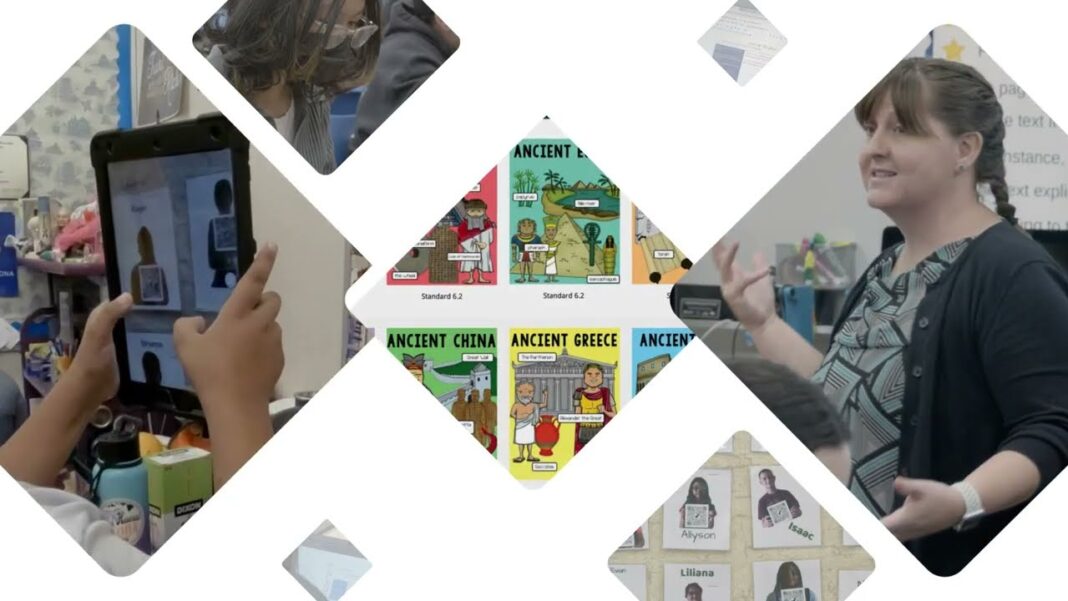In today’s digital age, it has become increasingly important for students to have a strong online presence. One way to achieve this is through the use of digital portfolios. These online platforms allow students to showcase their work, skills, and achievements in a visually appealing and interactive manner. In addition, digital portfolios also serve as a powerful tool for student assessment. They provide teachers with a comprehensive view of a student’s progress and abilities, beyond traditional methods such as exams and essays.
In this article, we will explore the benefits of using digital portfolios for student assessment, the steps to create one, examples of successful implementations, best practices, and potential challenges and solutions. Whether you are an educator looking to incorporate digital portfolios into your teaching methods or a student seeking to enhance your online presence, this guide will provide you with valuable insights and practical tips.
Benefits of Using Digital Portfolios for Student Assessment
Digital portfolios offer numerous advantages over traditional assessment methods. Let’s take a closer look at some of the main benefits:
1. Showcasing a Diverse Range of Skills and Abilities

Traditional assessments often focus on a few specific areas of learning, such as academic knowledge and test-taking skills. However, digital portfolios provide a more holistic view of a student’s capabilities. By including a variety of work samples, from essays to videos to design projects, students can showcase their unique set of skills and talents. This allows for a more comprehensive assessment of their overall strengths and areas for improvement.
2. Encouraging Reflection and Self-Evaluation

Creating a digital portfolio requires students to reflect on their learning journey and select their best work to showcase. This process of self-evaluation helps students develop critical thinking skills and gain a deeper understanding of their own strengths and weaknesses. Through digital portfolios, students can also track their progress over time, which can be particularly useful for long-term projects or courses.
3. Promoting Creativity and Engagement
Digital portfolios offer an interactive and visually appealing way to present students’ work. This can motivate them to put more effort into their projects, as they have a platform to showcase their creativity and skills. In addition, the use of multimedia elements such as videos and images can make the learning experience more engaging for students.
4. Facilitating Teacher-Student Communication
Digital portfolios provide a space for ongoing communication between teachers and students. Teachers can leave comments and feedback on specific work samples, and students can respond and ask questions. This promotes a collaborative and supportive learning environment, where students can receive personalized feedback and guidance from their teachers.
5. Preparing Students for the Digital World
In today’s job market, having a strong online presence is crucial. By using digital portfolios for student assessment, educators are preparing their students for the real world. They are equipping them with the necessary skills to effectively showcase their work and abilities in a professional and modern manner.
Steps to Create a Digital Portfolio
Now that we have explored the benefits of digital portfolios, let’s dive into the steps to create one:
1. Determine Your Purpose
Before creating a digital portfolio, it is essential to determine your purpose. Are you using it for personal branding, job applications, or student assessment? This will inform the content and design choices you make for your portfolio.
2. Choose a Platform
There are various platforms available for creating digital portfolios, such as WordPress, Weebly, and Wix. Each platform offers its own set of features, so do some research and choose the one that best suits your needs and goals.
3. Curate Your Work Samples
Select your best work samples that align with your purpose and target audience. Remember to include a diverse range of projects that showcase your skills and abilities.
4. Organize Your Content
Organize your work samples into categories or sections. This will make it easier for viewers to navigate and understand your portfolio. You can also add descriptions or reflections for each sample to provide context and highlight your thought process.
5. Design Your Portfolio
A visually appealing and user-friendly design is crucial for a successful digital portfolio. Choose a clean and professional layout that highlights your content. Use high-quality images and videos, and make sure the text is easy to read.
6. Optimize for SEO
If you are using your portfolio for personal branding or job applications, it is essential to optimize it for search engines. Use keywords related to your field of expertise throughout your portfolio to increase its visibility online.
7. Test and Refine
Before sharing your portfolio, test it thoroughly on various devices to ensure it is responsive and functions properly. Ask for feedback from friends or family to make any necessary improvements before making it public.
Examples of Successful Digital Portfolio Implementations
To gain a better understanding of how digital portfolios can be used effectively for student assessment, let’s look at some examples:
1. Pixar in a Box
Pixar in a Box is an online educational program created by Pixar Animation Studios and Khan Academy. It offers lessons on various topics related to animation, such as modeling, character design, and storytelling. At the end of each lesson, students are required to complete a project, which they can then showcase in their digital portfolios. This allows teachers to assess their understanding and application of the concepts taught in the lessons.
2. Seesaw
Seesaw is a popular digital portfolio platform designed specifically for teachers and students. It allows students to upload their work and teachers to leave comments and feedback. Seesaw also offers features such as video reflections and the ability to collaborate with classmates. This makes it a comprehensive tool for student assessment and communication between teachers, students, and parents.
3. Adobe Spark
Adobe Spark is a versatile platform that can be used for creating digital portfolios. It offers various templates and design options to help users create visually appealing portfolios. One notable feature is the ability to add multimedia elements such as videos, images, and audio. This makes it an excellent choice for students in creative fields such as graphic design, filmmaking, or photography.
Best Practices for Using Digital Portfolios in Student Assessment
To ensure the success of digital portfolios in student assessment, here are some best practices to keep in mind:
1. Align with Learning Objectives
Digital portfolios should align with the learning objectives of a course or project. By doing so, they serve as a tool for assessing whether students have met these objectives and allow for meaningful feedback.
2. Provide Guidance and Support
Creating a digital portfolio can be overwhelming for students, especially if they have never done it before. Teachers should provide guidance and support throughout the process, from selecting work samples to designing and optimizing their portfolio.
3. Encourage Reflection and Self-Evaluation
As mentioned earlier, self-evaluation is an essential aspect of digital portfolios. Teachers should encourage their students to reflect on their work and assess their progress. This not only helps them improve but also promotes a growth mindset.
4. Use Rubrics
Rubrics are an effective way to provide clear expectations and guidelines for students’ work. They also provide a framework for teachers to evaluate students’ portfolios consistently. Be sure to share the rubrics with students beforehand, so they know what is expected of them.
5. Consistently Monitor and Provide Feedback
Digital portfolios offer the opportunity for ongoing assessment and feedback. Teachers should make a habit of regularly monitoring students’ portfolios and providing timely and constructive feedback. This promotes continuous learning and improvement.
Challenges and Solutions
While digital portfolios offer numerous benefits, there are also some challenges that may arise in their implementation. Here are a few common challenges and possible solutions:
1. Technical Difficulties
Creating digital portfolios requires students to have access to technology and internet connection. This can be a challenge for students who do not have these resources at home. In this case, teachers can provide in-school time for students to work on their portfolios or consider alternative submission methods such as physical portfolios.
2. Privacy Concerns
Digital portfolios often contain personal information and work samples, which may raise privacy concerns. Teachers should ensure that students are aware of what they are sharing online and obtain consent from parents or guardians if necessary. They should also educate students about the importance of protecting their personal information online.
3. Maintaining Consistency
With multiple platforms available for creating digital portfolios, maintaining consistency across all students’ portfolios can be challenging. Teachers can provide guidelines and templates to help students create a unified and professional-looking portfolio.
Conclusion
In conclusion, digital portfolios offer a powerful tool for student assessment, providing a more comprehensive and accurate view of their skills and abilities. By following best practices and addressing potential challenges, educators can successfully incorporate digital portfolios into their teaching methods. Students, on the other hand, can use them to showcase their work, creativity, and skills, enhancing their online presence and preparing for the digital world. So why not start building your own digital portfolio today? Who knows, it may just be the key to unlocking your full potential and standing out in the competitive job market.
